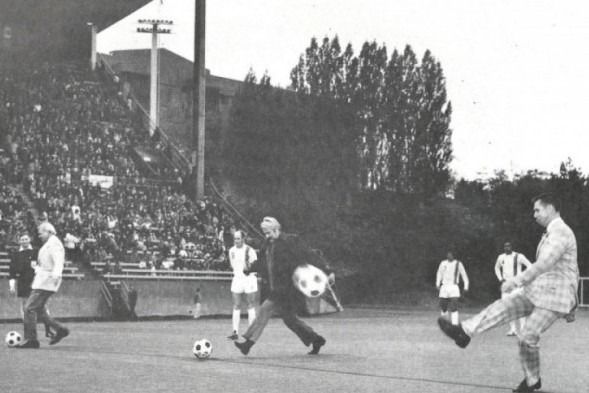
By David Eskenazi and Steve Rudman
When the first edition of the Seattle Sounders (1974-83) entered the North American Soccer League, it did so accompanied by the same sort of energy and enthusiasm that greeted the second edition in 2009. Sounders 1.0 obviously didnt make it, and many of our site visitors have asked us to explain why, despite their legion of fans, the early Sounders failed.
On Jan. 11, 1983, Bruce Anderson, a former pro football player and securities analyst, stood before a throng of reporters in a downtown hotel ballroom and announced that he and partner Jerry Horn had completed their purchase of the Seattle Sounders the previous evening, assuming majority control of the clubs stock from construction impresarios Frank and Vince Coluccio.
Anderson detailed that he and Horn had acquired 75 percent of the stock in the North American Soccer League franchise 37.5 percent each and that the Coluccios had agreed to remain as minority owners, despite having lost $4 million since their purchase of the team in 1979.
A large, seemingly affable man, Anderson pattered for several minutes, offering background. After graduating from Willamette University, the Coos Bay, OR., native played for the Rams, Redskins and Giants before moving into securities, first with E.F. Hutton in New York, then with Merrill, Lynch in Los Angeles. He arrived in Seattle in 1977 to work for Foster & Marshall. A former Sears Roebuck executive, Horn currently served as a director with REI.
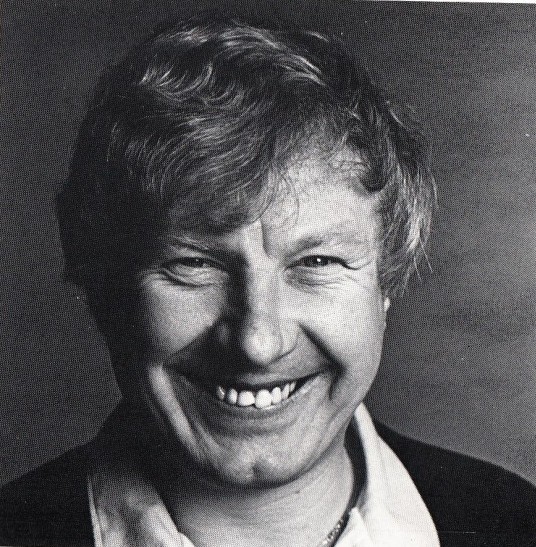
After Anderson opened the proceedings to Q & A, a reporter asked Anderson about his relationship with the clubs head coach, Alan Hinton. That wiped a faint smirk off Andersons face.
I thought it was understood, Anderson said, that Alan Hinton will no longer be our coach.
Most reporters wondered if they had heard correctly. Hinton fired? His teams had won two division titles and two international cups in three years. Hinton had just taken the Sounders to Soccer Bowl 82, opposite the Cosmos. Two years before that, he had been the NASL Coach of the Year after directing the Sounders to a 25-7 record, the best regular season mark in league annals.
His firing didnt make sense. While Hinton had sometimes been a public relations liability (he did not lack for candor), no one questioned his ability to coach winning soccer, or his passion for the sport.
All eyes scanned the ballroom. No Hinton — and he never missed team functions. Then all eyes shifted to a rear table, where Joy Hinton, the coachs wife, sat frozen, digesting the news of her husbands ouster. Suddenly, she jumped to her feet and rushed out, Anderson watching her bolt. When Anderson returned his gaze to reporters, he explained that Hinton had been fired in order to facilitate the Americanization of soccer in Seattle.
Alan Hinton has been an extremely successful coach, but Alans style of play is not what we want to present, said Anderson. We want emotion from our players. We want to see the soccer equivalent of a slam dunk, the long ball. We want to see the two-minute offense for 90 minutes on the soccer field.
While some reporters began to contemplate where, exactly, Anderson ranked on the delusional scale, he went on to say that he wanted the Sounders to score more goals even though they had scored more goals than 13 of 14 teams in the North American Soccer League the previous season. Then he claimed Hinton didnt do enough to Americanize the game even though the NASL had a built-in Americanization plan, and no NASL coach had developed more outstanding Americans than Hinton, especially Mark Peterson.
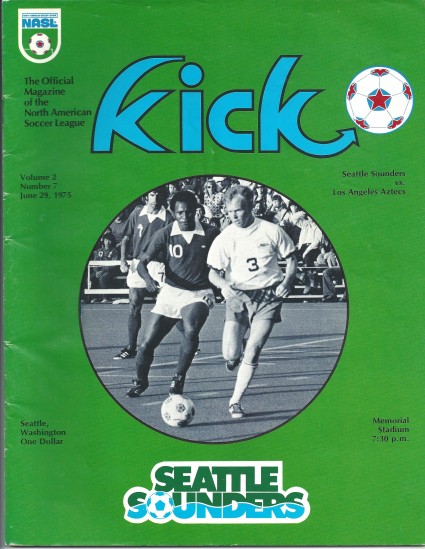
Anderson added that he would curtail the Sounders recruitment of foreign players, which Hinton favored as a means of keeping his teams competitive and box-office worthy.
Finally, Anderson declared that he harbored a pair of deep peeves, the constant use of the words pitch and lads, by Seattles British players to describe the field of play and the players.
Pitch is something I get my hands on when I remove the Christmas tree, Anderson said. Lad is something I call a dog. Real men dont eat quiche. They are players, not lads.
When Andersons remarks filtered into the Seattle soccer community, they went over like an Ibsen festival in Las Vegas. Newspaper pundits harpooned Anderson for stupidly announcing Hintons firing without first making sure Hintons wife already knew about it. Some equated Hinton’s dispatch to the axing of Lenny Wilkens, who learned of his dismissal by the Sonics while he played golf, and Jack Pateras expulsion by the Seahawks while he fished the Quinault.
Over the next two days, about 60 picketers gathered at the Kingdome, marching to protest the new ownership of Bruce Anderson, who insisted he had been assured Joy Hinton knew in advance of her husbands firing.
Claudia Best, wife of Sounders President and GM John Best, informed the media that she personally had informed Joy Hinton before the news became public. But Joy Hinton countered that Claudia had done no such thing. Conflicting accounts surprised no one: Best and Hinton had a history of bad blood dating to their days with the Vancouver Whitecaps.
Best made a stab at damage control, saying, So many things he (Anderson) said were illustrations, not meant to be interpreted literally. Naturally, everyone interpreted them literally.
Never able to keep their soiled linen out of public view, the Sounders had an almost pathological need to air it. After 48 hours in seclusion, Alan Hinton emerged to say he had been made the scapegoat for the teams attendance figures, in a downward spiral for two years. Anderson blamed Hintons style of play for chasing off fans, although fans didn’t mind Hinton’s style of play in 1980 that resulted in record attendance.
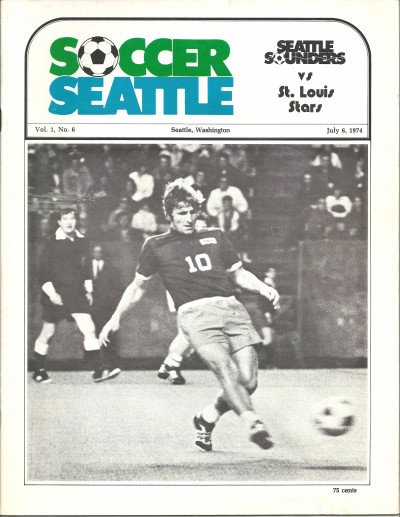
Normally, Hinton said, I have great foresight into whats happening. But I didnt see this one. I didnt imagine in my wildest teams that my last game would be the Soccer Bowl.
Frank Coluccio, from whom Anderson had purchased 37 1/2 percent of the Sounders stock, heaped his own contribution upon the hoo-hah, criticizing the new owner and his brother Vince for firing Hinton.
I was out-voted 2-1 on firing Hinton, he said. Three years in the playoffs, best winning record ever for a season (25-7 in 1980), the Soccer Bowl. If the coach of the Sonics or Seahawks did that, he would be governor of Washington.
Best and Hinton also engaged in a media to-do, Best denying any involvement in the Hinton purge, Hinton declaring, draw your own conclusions.
As newspapers and sports talk shows buzzed over the developing soap, what promise, if any, a Bruce Anderson ownership might hold, and whether the Sounders could even survive the tumult, the larger question remained: how could a franchise that started out with so much promise only a decade ago, and so seemingly robust just two years earlier, implode so fast?
Sounders 1.0 rolled out amid the same pomp, hoopla, enthusiasm and flag waving that enveloped Sounders 2.0 35 years later. Following a name the team contest that drew 3,735 entries (Sockeyes, Evergreens, Mariners, Cascades, and Schooners failed to cut it with voters), the Sounders made their debut on May 12, 1974, 12,132 fans (8,000 of whom had spent $40-$50 for season tickets) greeting the new team at Memorial Stadium.
With seating at a premium, the Sounders recorded the leagues first sellout on June 22 as 13,876 watched Seattle shut down Philadelphia 2-0. Nine more sellouts through 1975, as well as recognition that Seattleites had bonded to the product Best developed and Jimmy Gabriel coached, prompted the club to evacuate Memorial Stadium and take up residence in the just-finished Kingdome. On April 8, 1976, the Sounders and Cosmos christened the facility as 58,128 saw Pele score two goals.
The Sounders averaged 23,828 fans that year and, bolstered by crowds of 41,270 for the Cosmos on July 10, 1977, and 56,256 for the L.A. Aztecs on Aug. 25, averaged 24,226 that year. When Seattles record flattened to 15-15 in 1978, average attendance followed suit, falling to 22,579. And when the Sounders suffered their first losing season (15-17) in 1979, average attendance took a bigger plunge, to 18,998.
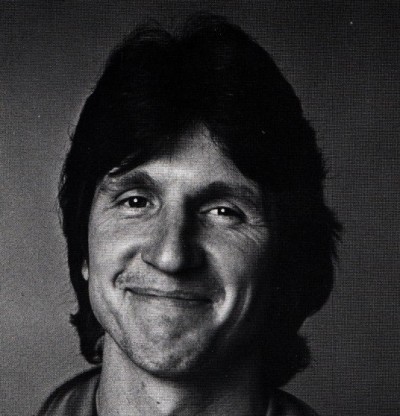
A 15-year veteran of the English First Division (Wolverhampton, Nottingham Forest, Derby County) Hinton replaced Gabriel as head coach on Nov. 7, 1979, and, with the blessing of the Coluccio brothers, the teams new owners, made three major acquisitions: midfielder Alan Hudson, left wing Tommy Hutchinson and striker Roger Davies, who became the principal operatives in one of the greatest regular seasons in Seattle pro sports history.
The Sounders posted a 25-7 record with 15 shutouts. They drew 49,606 for the Cosmos, 36,256 for Vancouver, 34,356 for Toronto, 33,363 for Vancouver and wound up averaging 24,247. Davies won the NASL MVP award after scoring an absurd 25 goals, four in one match against Rochester. The league named Hinton its Coach of the Year.
Fans embraced that team and so, frankly, did the Seattle journalists who followed them. The players (and Hinton) drank beers with reporters after matches, especially on road trips. British players referred to reporters as mates. The entire Sounders organization offered primers to reporters on a game about which they were mostly clueless.
Where most pro athletes essentially verbalized cave drawings, these lads spoke in full sentences and were always accessible (some invited reporters to their homes to do interviews). And they had a prankish sense of humor.
Sidebar: one Seattle reporter, a know-it-all who had no special knowledge of soccer, enjoyed second-guessing Hinton and his players, routinely saying, you should have done this is that situation, or you should have done that. This embarrassed other reporters, and Sounders players finally determined to do something about the blowhard.
During a morning practice at the Kingdome prior to a night game at Empire Stadium in Vancouver, B.C., Hudson summoned the reporter for a private chat in the locker room while Hudsons teammates headed for the parking lot to begin the drive north.
Much later in the afternoon, when the reporter reached the Canadian line, he found a phalanx of border guards waiting for him. They ordered him out of his vehicle, and soon located as per the tip they had received — a dozen small plastic bags containing white powder taped to the underside of the reporters automobile hood. The reporter frantically proclaimed his innocence, but it took border guards a few hours to determine the white powder wasnt a drug, and that the reporter had probably been the victim of a prank.
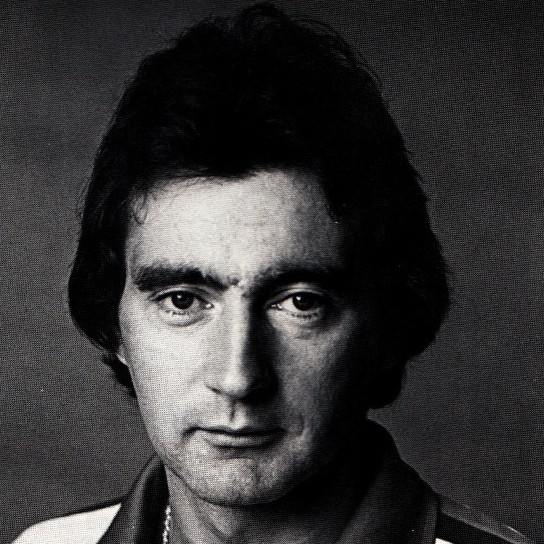
You wont believe what just happened to me! The reporter gasped as he arrived at the Exhibition Stadium press box near the end of the match. Who would do that to me? I had to call everybody I knew to get out of there.
Given the teams camaraderie, chemistry and dominant regular season (Sounders scored 72 goals and held opponents to two or fewer goals 28 times in 32 matches), most figured Seattle would breeze to Soccer Bowl 80.
But the Aztecs shocked the Sounders in Los Angeles 3-0 in the first game of a two-game playoff series, placing the Sounders a game away from elimination. Seattle stormed back for a 4-0 win in Game 2 at the Kingdome in front of 32,584.
Today, the Sounders would have advanced by virtue of aggregate goals. But in those days, the NASL did not use the aggregate system, preferring a mini game, which all fans loathed, followed by a shootout, if necessary. Los Angeles won this competitive farce 2-1.
Not only had Sounders fans never been so disappointed (not even after losing the 1977 Soccer Bowl to the Cosmos), they blamed the NASLs tiebreaking procedure for the defeat and never again supported the Sounders as they once had.
Looking back now, that loss marked the moment when Sounders 1.0 started to unzip. Less than a year later, Best admitted, What has happened here is that our club, and many of the fans, have had a divorce.
Starting in the late 1970s, when the Cosmos, Sounders, Whitecaps and Portland Timbers began attracting mobs, NASL Commissioner Phil Woosnam bugled often that soccer would become The Sport of the 80s.
Certainly that seemed true in Seattle, where fans flocked to see the Sounders in ever-increasing numbers, and with the added promise of untold hordes to come. Almost by league decree, NASL officials routinely pointed to the hundreds of thousands of youths across the fruited plain that played soccer, the assumption being that they would one day become paying fans. Except for the fact they didnt at least not in Woosnams lifetime.
By 1983, when Bruce Anderson appointed himself savior of the Sounders, the NASL had emerged as a mass extinction event waiting to happen. Of the 15 teams in the league in 1974 when the Sounders joined, only two remained the Cosmos and Vancouver Whitecaps. In that decade (1974-83), the NASL expanded from 15 teams to 20 and then to 24 before reducing to 14 and finally to 12. One year, the NASL tried to bloat to 32 teams, but couldnt locate enough cities willing to take the bait.
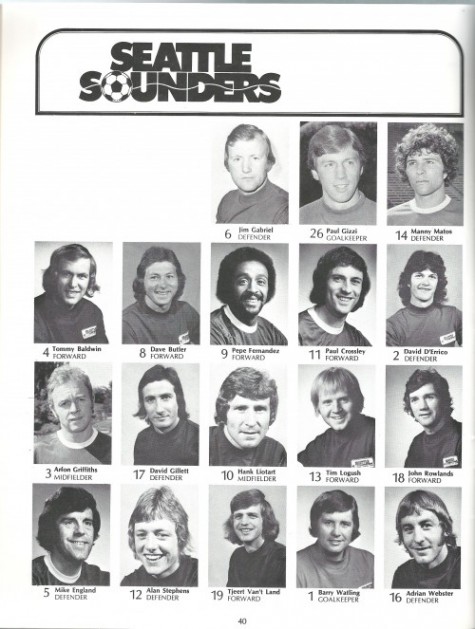
In the first decade following Woosnams Soccer is the Sport of the 80s mantra, 43 NASL teams took to the pitch in 27 cities. Philadelphia burned through the Atoms and Fury, Toronto through the Metros, Metro-Croatians and Blizzard. The Dynamos and Caribou flopped in Colorado. San Diego ignored the Jaws, Toros and Sockers, Washington the Diplomats and Team America, Atlanta the Apollos and Chiefs.
When Los Angeles could not successfully induce anyone to watch the Aztecs, it tried a different pea under a new shell, trotting out the California Surf. No go. Neither the Minutemen nor Tea Men could make it in New England, and went under again after a brief reincarnation in Jacksonville (Jacksonville didnt even have the common sense to change the Tea Men nickname).
From Canada to Texas, and Florida to Hawaii, public apathy squashed almost all attempts take pro soccer mainstream, leaving this partial list of cities in which soccer went wanting at the gate: Atlanta (Chiefs), Baltimore (Comets and Bays), Calgary (Boomers), Chicago (Mustangs and Sting), Cleveland (Stokers), Dallas (Tornado), Edmonton (Drillers), Houston (Hurricane), Kansas City (Spurs), Miami (Toros), Minnesota (Kicks), Montreal (Manic), Rochester (Lancers).
As fast as fans showed up in 1974, they fled with equal speed in 1981. The reasons mystified NASL officials, who blamed declining numbers on a poor economy and a lack of TV funding. Never did league mavens cite the real reasons: in much of the country, soccers time had not yet come; in all of it, the expense of pro soccer wildly exceeded income.
The Sounders paid Hudson slightly more than $100,000 annually. Davies received $90,000, goalie Paul Hammond $65,000, and striker Peter Ward $6,500 per month. Except for designated players, most MLS players today earn from $40,000-$100,000 not much difference from what NASL players earned 35 years ago.
Apart from the disparity between income and outgo, what all NASL teams came to discover was that customer loyalty had nothing to do with sport or brand. It had everything to do with winning and losing: fans bonded to wins, nothing more, and ignored everything else.
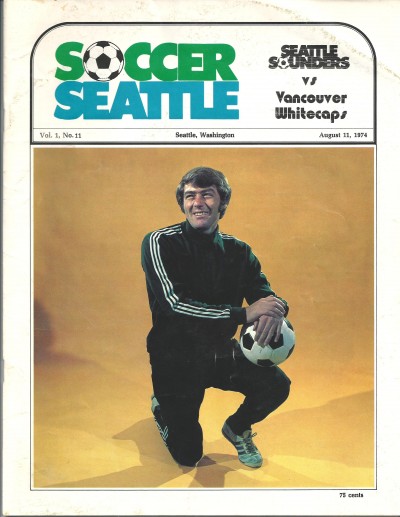
The Sounders started to lose in 1981, their first dance on the trapdoor; by 1982, the club had resorted to using gimmicks, such as changing the playing configuration at the Kingdome and renaming it the SoccerDome. Why Bruce Anderson, a professional investor, sank his money into such obvious quicksand, we dont know. But he did. Probably ego.
Blithely charging ahead, Anderson wooed Cliff McCrath, the much-admired coach at Seattle Pacific who had been instrumental in the formation of the franchise in 1973-74, to help take the public sting out of Hintons firing. McCrath considered it, but ultimately declined.
From that moment on, Anderson wouldnt speak publicly, but his actions had a deleterious effect on a dwindling fan base.
In order to chop expenses, the Sounders shopped popular striker Peter Ward, the 1982 NASL MVP, to Nottingham Forest. It offered goalkeeper Paul Hammond a pay cut. When Anderson told Best he wanted to become an active owner, Best resigned (Feb. 23), slightly more than a month after Anderson took control.
Anderson decided not to replace Best, saying, I think there have been a great deal of myths in this league about what it takes to run a staff.
Minority owner Vince Coluccio learned of Bests resignation when he heard it on the radio. Asked if Andersons failure to tell him about it rankled him, Coluccio said, Yes.
Horn jumped to his partners defense, saying, Bruce hasnt had the opportunity yet to demonstrate his sensitivity to the fans and public. Hes been on the defensive. Weve got to get public opinion and fan support swung toward him.
Never happened.
Six weeks after Anderson fired Hinton, the team had still not named Hintons successor. It did not have a radio or TV contract for the 1983 season, and had scrambled to line up promotions for home games. Goalie Hammond had jumped ship, and season ticket sales had dropped to 3,500, down from 4,000 in 1982, and down a full 4,500 from 1974.
Anderson replaced Hammond, but did so with Jim Corrigan of Manchester City. So much for Americanization.
After the Sounders made another unsuccessful run at McCrath, it offered the head coaching position to Jay Miller of Tampa University. He negotiated with Anderson for a couple of days, and said no. Two days later, Laurie Calloway, a veteran of two failed franchises, said yes.
When Anderson returned from his self-imposed media Elba, he demonstrated he had not lost his bent for boobery. I would rather lose 5-4, he said, than win by a lower score. The next time the Sounders played at the Kingdome, a placard said, Pitch Anderson Save Our Lads!
Calloways first public act: he stripped Hudson of his captaincy. Then he cut Hudson, Davies and long-time Sounder Frank Barton, saying, Hudson is not as competitive as I want. No one who had watched Hudson, a three-time All-Star, bought that.
Upon his release, a media savvy Hudson summoned Seattle reporters to his home, where his wife Maureen had prepared an elaborate spread of hors douvres, and spent a pleasant two hours entertaining scribes with for-publication mocks, slams and nose pulls on Anderson, Calloway and interim coach Bobby Howe (Hudson called Calloway and Howe puppets).
I feel that nobody will want to take this franchise off Anderson because hes going to do so much damage the franchise wont be worth saving, Hudson pronounced.
When Best resigned in February, he had lauded Anderson, saying that he would always support Andersons efforts with the Sounders. But in May, Best did a 180, aligning himself with group that sought to bring an expansion Major Indoor Soccer League franchise to the Tacoma Dome. The Sounders had planned to play indoor soccer at the facility due to a shortage of premium dates at the Kingdome.
Anderson went loco, accusing Best of being unethical. I feel very badly, Anderson complained. John worked for me. He was to put a Tacoma deal together for me. Now he is individually trying to steal it away from us. And he has said some very bad things about us, that we are underfinanced and going out of business. Thats absolutely false and I very much resent it.
When Soccer Bowl bonus checks issued by the Sounders to three 1982 players Gary Mills, Kenny Hibbitt and Peter Ward bounced, Anderson blamed it on a banking error. And when only 10,085 fans showed up to watch the Sounders and Cosmos on May 11, 13,000 fewer than the previous low Seattle-New York attendance figure, Anderson had no one to blame.
Nervous Sounders front-office personnel decided Anderson had to do something to convince fans he was a regular guy doing his best to salvage a bad situation. So they convinced him to participate in one of more unusual pre-game promotions in Seattle pro sports history Dunk The Owner.
The team placed ads in both Seattle newspapers. The headline said: Anderson Takes a Splash for Charity! The copy said: Do you think Sounders owner Bruce Anderson is all wet? Tomorrow night youll have a chance to dunk Bruce before the Sounders-Sockers game in the Kingdome. Bruce will station himself over a tank where a target, tripped by an accurately kicked ball, will dunk him.
The next evening (May 28), 74 fans booted soccer balls in the hopes of soaking the controversial owner in a tank of ice water. Six succeeded. From a p.r. standpoint, each time Anderson hit the drink, he took a little more of the franchise with him.
By that point, Horn and Frank Coluccio had become convinced Anderson could no longer function as general manager, Horn saying, Frank and I agree we arent happy with the results Bruce has gotten. Even Bruce admits he shot himself in the foot a couple of times.
Some in the teams front office determined not to wait around for any more spent cartridges. On June 20, the clubs operations director, ticket director and office manager all resigned, prompting rare discouraging words from McCrath.
Unfortunately, McCrath said, Bruce is a product of his own arrogance and his own insensitivity, not only to the general public, but to everyone involved in soccer in this city. It seems like he has a vendetta against rightness and goodness. The people who are out there hoping like crazy that the sport doesnt die, both in Seattle and other cities, are not encouraged. They arent even being addressed by Anderson. Its almost as if theyre non-existent in his mind. It seems as if he is exerting a lot of effort just to see how badly people can be bruised.
To Andersons astonishment, and media glee, the Coluccios held a press conference to air their options in the event Anderson left the franchise. Anderson then accused Frank Coluccio of creating confusion.
More confusion ensued on June 24 when (a) the club brought Don Paul aboard as general manager and (b) Horn resigned from the board of directors, complaining he had been caught in a crossfire between Anderson and Coluccio. Horn also placed his stock up for sale, revealed that Anderson wanted out, and that Coluccios wanted back in.
The Coluccios got back in by snatching up Horns stock, raising their stake from 25 percent to 62 1/2 percent. At a press conference, Coluccio told reporters he would scap Andersons slogan, red, white, black and blue and erase it from the publics mind, and bring back the original team logo, which Anderson had also junked. When reporters asked Coluccio about Calloway, Coluccio said, I think hes in a lot of trouble, adding that he remained miffed at Calloways treatment of Hudson.
Paul, the new GM, hadnt been on the job long when he told reporters, Personally, Ive been waiting for this (club) to die so it can be reborn.
The rest of the Sounder summer raced by in a blur. Bests group won the battle for an MISL franchise in Tacoma. After briefly exploring the possibility of fielding an indoor team in Anchorage, the Sounders abandoned plans to field any indoor team. One week after Anderson asked the Coluccios to buy him out (July 7), the Coluccios, now having lost $9 million, announced they also wanted to sell.
The Sounders missed the first of two payrolls on Aug. 2 and played what proved to be their final game on Sept. 4, a 2-1 loss to the Golden Bay Earthquakes. Their final average home attendance for the final season: 8,181.
When Sounders 1.0 officially expired on Sept. 6, NASL Commissioner Howard Samuels described the downfall of a once-model (at least for pro soccer at that time) franchise as a comedy of errors on the part of all of us.
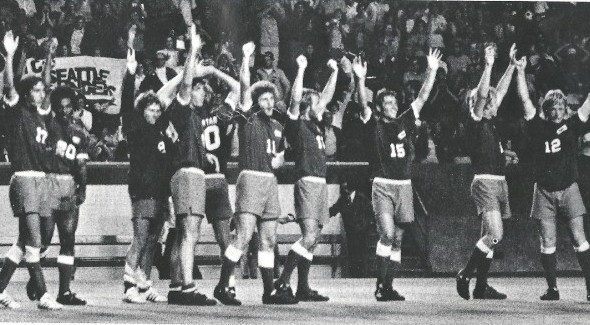
-
Many of the historic on Sportspress Northwest are provided by resident Northwest sports ?aficionado David Eskenazi, who writes The Wayback Machine every Tuesday. Check out DavidsWayback Machine Archive. David can be reached at (206) 441-1900, or at the following e-mail address: seattlesportshistory@gmail.com
(Wayback Machine is published every Tuesday as part of Sportspress Northwests package of home-page features collectively titled, The Rotation.)
———————————————
Note To Readers: If you have an historical topic you would like explored in the Wayback Machine, please leave your idea in the Comments section that accompanies this article.

22 Comments
Overall, Anderson had hit the problem right on the head, and jackasses who felt differently ignored the overwhelming evidence. Anderson may not have known, right off the bat, exactly how the NASL needed to be “Americanized,” but he inherently grasped what probably even the latest generation of wannabees have not: Over time Americans wanted a league they felt was their own–not some traveling, extended exhibition show/circus featuring Europeans of various stripes who had come here either to make a little more cash or because their careers were effectively over in locals where soccer actually meant something. THAT IS ULTIMATELY–AT ITS TRUE CORE– WHY THE NASL FAILED. It never made a deep connection to the American psyche. And the current version runs that same risk, although it probably will make it long-term simply because America has put developing an American brand of soccer first–EXACTLY WHAT ANDERSON WAS TALKING ABOUT. And Hinton was not the type of character you want long term on the face of a franchise
Thanks so much for this article. From childhood, I was a huge Sounders’ fan. When they died, I was in the ninth grade and had been moved to Maine where there was no NASL coverage, and so I never really knew what happened. Great article and lot of good memories. Again, thank you!
Great article. I went to a number of Sounder games in the Kingdome back in the day, but I wasn’t aware of most of the behind the scenes drama. Thank you.
A suggestion regarding topic would be the Seattle Totems of the 1960s prior to the Sonics, Pilots etc. I was fortunate to have know several of the players outside the rink and played youth hockey with there kids.
Thanks again,
Thanks for the suggestion!
Good point, Lucky. Another point that needs to be realized is that top talent will never reside in the current iteration. MLS will be the equivalent of ‘AA’ baseball, at best. Fans also need to realize that even though the Sounders are drawing double the league average, revenue is divided almost equally among teams. My concern is there is a huge ratio of fans with unrealistic expectations.
what a great article, really a good read. we saw the Sounders a lot in the early 80s in the kingdome. Jack Brand the goalie, Bruce Rioch the defender, grudge matches against the whitecaps, etc. also it must have been a lot of fun to be a reporter back then.
what happened? I filled in the required fields . . .
Late to the game and all….GREAT article, thanks so much for putting this together!
The 1980 Sounders were my high-water mark for the sport (I was 16 years old that year). I’ve often tried to identify why my interest in soccer completely vanished within 18 months and your article hit it on the head — it’s almost like you were reading my mind. I recalled the tragedy that was Anderson’s ownership but reading it in detail here it’s pretty amazing.
Am I being overly dramatic if I ask the question about this city being cursed by more than our fair share of horrific ownerships over the years? (Behring, Schultz, ClayClay, Argyros, Smulyen, etc.)
Coluccios did try another comeback around 1993-1995? (dont remember the exact date) with an announcement that they were looking at building a soccer specific stadium on land they owned just North of SeaTac airport. For what ever reason that idea fell through?
Great article for all of us who loved those Sounders! I recall, though, that Huddie signed with the Sounders a year or two before Alan Hinton, Hutch and Roger Davies (in fact, the core of those great Sounder teams had played together at Derby County in the English League). Hudson always played a bit softer than those recruited by Hinton. But the Bruce Anderson fiasco – combined with the unsustainable NASL model – really did kill those Sounders, not, as one writer suggests, some vague believe that the game ought to be Americanized.
Thank you for this article. I was really young when all of this happened. Was this behind the scenes or was this info widespread and documented in the newspapers at the time? The names of those players are still recognizable to me and I followed them as much as the Mariners, Seahawks, Supes and Huskies.
I wonder what the NASL would look like today if it survived. There are some cities that had good attendance then as NASL markets but don’t have MLS teams now like Minnesota, Tampa Bay, Fort Lauderdale and Tulsa, but the league unfortunately allowed weak ownerships in the league and they couldn’t handle the losses in trying to keep up with the Cosmos.
Some of it was behind the scenes, some of it was public. The story evolved over several months and none of it was amassed into one document, and examined, as it occurred. When The Sounders finally folded, they were largely and quickly forgotten. We tried to reassemble what went down and put context and texture to it. Thanks for reading and visiting our web site.
Thanks for the history lesson! Seems Seattle has a long, proud tradition of having people in charge of their teams that have no business being in charge of anything.
Well, Wedge has a left-over mulligan from last year– so he should have another coming. But, Lincoln and his model lackey are ultimately only about Nintendo profit; about Japanese-style hierarchy and yessir! and stomping out the evils of independent thought, “insubordination” and forgetting to mouth the corporate mantra 24/7: not about winning baseball games. So, likely Wedge is the only one the Nintendo lackeys see as having a poor batting average: oh fer one.
Oh, that they had the mirror, mirror on the wall that dared the truth to tell when asked.
(Never happen. )
I used have season tickets. I used to care, to take my kids, to listen from anywhere I could– to happily share in the ephemeral stuff that baseball gave a community– the joy and excitement and hope and pride and commitment and revelry in all the Game stands for: Lincoln singlehandedly took it away by fundamentally being ignorant of the game, the traditions it marks, the meaning it holds, the obligation incumbent upon its stewards.
What a fundamental failure in all that matters in baseball; in all baseball matters.
Boycott. They only want your money: don’t give em what they want. Boycott.
The Mariner fan base have become prisoners of the Ichiro mystique and the whims of an indifferent ownership. The Ichiro experiment has been a great success for one individual and an abysmal failure for the team. Time to cut him loose. We can make it to last place without him.
Ichiro is the one starter who’s been able to get hits and score runs. He’s not the problem. He’s not the player he once was, but Suzuki IS hitting .296 with 45 hits and 17 runs in 38 games. I’m more concerned about Justin Smoak (.208), Chone Figgins (.188) and Brendan Ryan (.140!) than about Ichiro.
Wedge and everyone else knew this was the first full transitional year in which the kids were given real shots to prove they belong, and he’s being honest about how much a veteran bat or two would really help. If that’s a slap at management, so be it, but Wedge seems to me to be a pretty straight shooter and I respect him. Miss the ‘stache, though…looked cool.
And Trygvesture, I’ve been in your camp and fully understand where you’re coming from. As much as they’ve tried over the decades, MLB hasn’t been able to kill the sport of baseball. There’s college and prep ball in the spring, summer college or Legion ball in the summer…shoot, baseball may be most alive at some Little League game at your neighborhood grade school on Saturday afternoon.
Baseball is bigger than Howard Lincoln, Chuck Armstrong or even Bud Selig. They can’t kill it.
Touché– you’re right. Thanks.
My money goes to Baseball that’s about Baseball from now on.
Whitman was right…
A little candor is refreshing!
There frustrating enough to watch, God forbid having to work for them.
The M’s line-up: garbage in, garbage out. If the fans and local media will continue to buy this junk, what incentive is there for upper management to change?
Dave Cameron provided a great counterpoint to the Ichiro story on USS Mariner. While Ichiro isn’t doing as well with runners in scoring position after 39 at-bats, that’s a sample that’s way too small to be meaningful of anything.
If anything, the more damning number here is that, after 38 games in the season, Ichiro has only had 39 situations where a runner is in position to score. That speaks to the failures of Figgins as a lead-off, but it’s also due to Wedge’s ridiculous insistance on using Brenden Ryan as a #2 hitter when he’d be the #9 hitter on any other team.
Art you are the best writer in this city and i commend you for you honesty. What are the odds at this team being sold in the near future?
Stick a fork in Ichiro — last year was not a fluke — it was the beginning of the end for him. This should be his final season here. Retire his number, then get him the hell out of here.
If the Japanese owner refuses to lose Ichiro due to some kind of retarded nationalistic attachment , fire the owner. He is old and rapidly approaching his own final season. Time to look for a rich local owner with no ties to Oklahoma City.